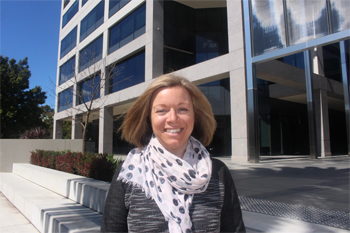Claire Waddington Female Voices In The Media Interview

Claire Waddington Female Voices In The Media Interview
Statistically, newsroom ratios are 70:30 male-to-female reporters
In analysing the bylines of 9,597 radio, television and press articles, iSentia found that more than 70% of finance stories came from male reporters
Females accounted for only 7.6% of sources quoted in sports news
Looking broadly at the news, across any category, male reporters were shown to include female spokespeople in their reporting in just 17.4% of cases.
When a female reporter was assigned, the percentage of female experts quoted climbed to 31.5%
For more, please see: http://www.isentia.com/blog/resource/isentia-media-insights-report
Interview with Claire Waddington
Question: What inspired this specific study in gender differences in Australian media?
Claire Waddington: A number of things really – Isentia knew that we had access to this type of data and I wanted to be able to add weight to the current conversation with data so that it is harder to put this type of story down to just women complaining. And for Women in Media they really wanted to be able to ignite a serious conversation to help support and protect women in the media industry as some of the issues are bigger than the gender pay gap, trolling and abuse is real for many women and in media this is just amplified.
Question: What surprised you the most about this particular study?
Claire Waddington: Sadly not all that much – I think we were just shocked by how many people had very personal stories of online abuse and workplace bullying or being overlooked. And the stats around male journalists dominating sport and political news was also surprising in that it was higher than we even anticipated.
Question: How is there gender discrimination in the media industry?
Claire Waddington: I think it comes down to unconscious bias, legacy behaviour and good old fashioned mateship. I believe that a lot of it is unintentional, that it is embedded in systems and rituals and tradition, and everyone has to be conscious of trying to present a balanced view when it comes to journalism for example. But having said that a lot of it is completely intentional – the trolling and abuse that women experience is scary and incredibly damaging, perpetrated for the most part by small minded old fashioned and scared people who think they can hide behind social media without understanding the impact it could have on a real human being.
Question: How is the news skewed to be 'male-centric'?
Claire Waddington: The report showed newsroom are 70:30 male-to-female reporters. Worse still, in analysing the bylines of 9,597 radio, television and press articles, at Isentia we found that more than 70% of finance stories came from male reporters.
It could be fair to suggest that good news reporting is subjective, and that gender should not hinder reporting of factual information. Why then were eight in every 10 spokespeople quoted in these articles male? Looking broadly at the news, across any category, male reporters were shown to include female spokespeople in their reporting in just 17.4% of cases. When a female reporter was assigned, the percentage of female experts quoted climbed to 31.5%.
We all know from our personal experiences that the saying -men are from Mars, women are from Venus' sometimes rings true; and it's this difference of opinion that we learn from, helping to shape our thinking and broaden our minds.
Question: Can you share with us a few of the insights from the survey of 1,000?
Claire Waddington: Despite women substantially outnumbering men in journalism training and making up almost half of the reporting workforce, a startling 74 per cent of political journalists are male. This gender division by subject matter becomes more concerning when female sources cited in political news sit at just 15 per cent.
It is even more apparent in sport. As role models like Michelle Payne, Stephanie Gilmore and Cathy Freeman have cast much-needed light on Australian women in sport, females accounted for only 7.6% of sources quoted in sports news.
Could it be that the 90% of sports stories filed by males failed to call on females for their opinion? All too frequently, the highly intelligent opinions of women like Marina Go, Francesca Cumani, Ann Sherry and Elizabeth Broderick are passed over in favour of their male counterparts – interesting given these women all hold powerful positions in the sporting world.
Question: How can we all work together to increase the percentage of female sources in sports media?
Claire Waddington: Of course with this we are up against a significant cultural shift that will certainly take time – years, maybe decades. As corporations across the country race to build quotas, we can help, as consumers of the news, by simply being aware. Next time you turn to a social commentator for insight on a pertinent issue, take note of their gender. Could their opinions be swayed based on being male or female?
Question: What message would you like Australians to take from this report?
Claire Waddington: Certainly for the media industry we would focus on the 3 action points that Women in Media have highlighted at the end of the report which are:
Audits and action on the gender pay gap
Improved strategies for social media harassment
Anti-discrimination policies to be put in place
However, these 3 points are relevant for any industry and I would like for all work places to establish better rules, strategies and policies to ensure the safety of their female workforce.
Interview by Brooke Hunter
MORE



